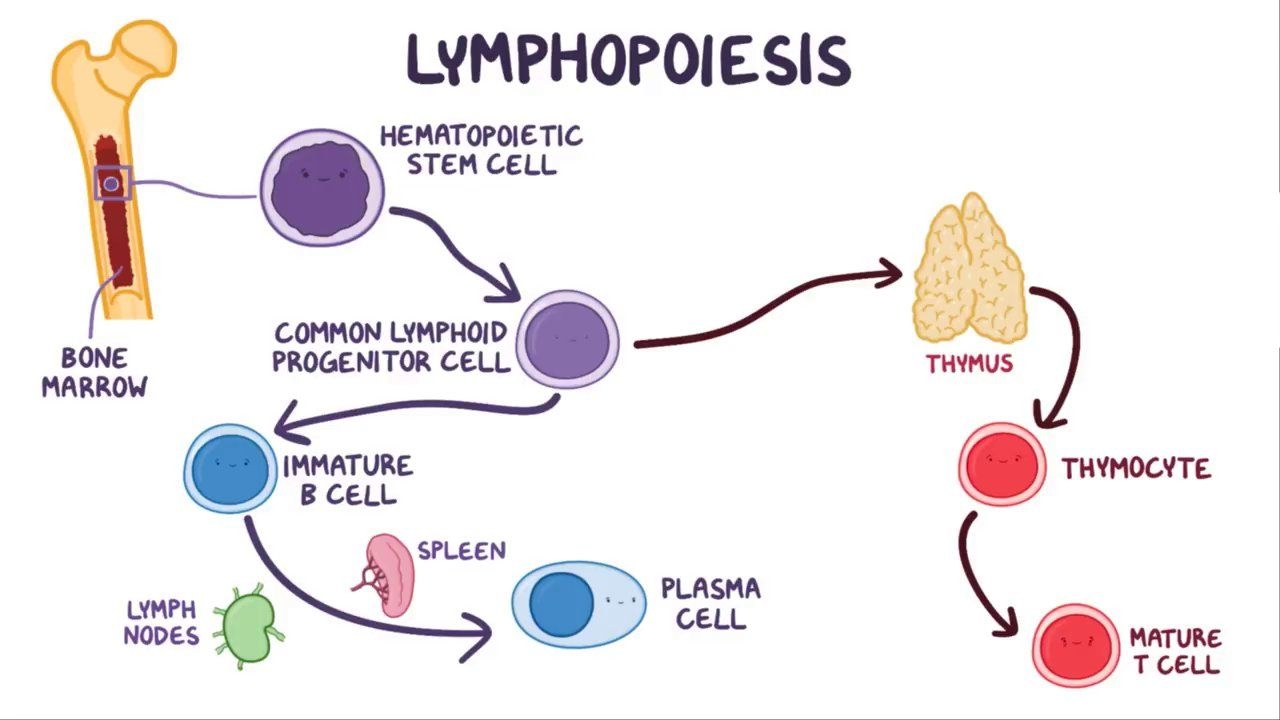Name Members of Innate Immune System and Understand their Function
Physical and Chemical Barriers :
skin , mucous membranes , lysozymes
Phagocytes :
engulf and destroy pathogens
Neutrophils = first responders , engulf and kill bacteria via phagocytosis and release ROS
Macrophages = engulf pathogens and present antigens to adaptive immune cells
Dendritic Cells = bridge innate and adaptive. they process and present antigen to T cells
Natural Killer ( NK ) Cells :
detect virus infected and cancerous cells
induce apoptosis via perforin and granzymes
Mast Cells :
release histamine and cytokines to increase vascular permeability
facilitates faster recruitment of other immune cells
Eosinophils :
attack helminths by releasing toxic granules
Basophils :
release histamine
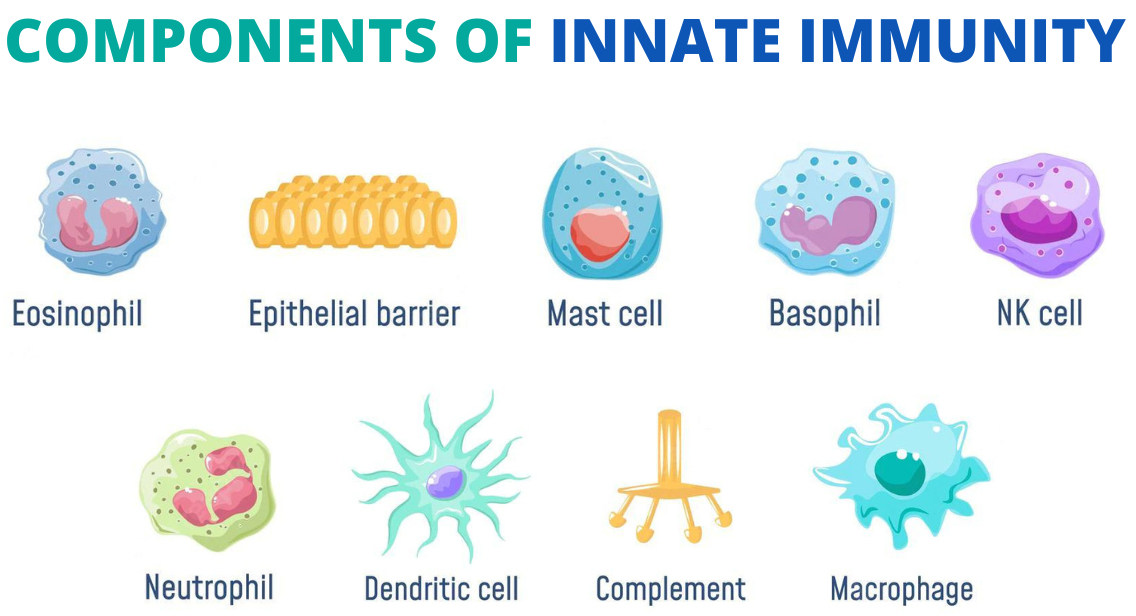
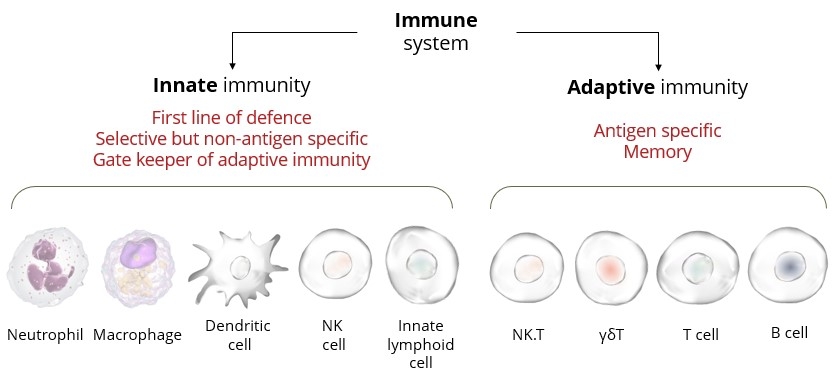
Describe the Complement Cascade and how this Helps to Clear Microbes from Our System
The complement system is a collection of circulating and membrane-associated proteins that are important in defense against microbes.
The complement cascade may be initiated by any of three pathways
Classical Pathway :
most often triggered by antibodies that bind to microbes or other antigens and is thus a component of the humoral arm of adaptive immunity.
Mechanism :
Triggered when C1 complex binds to antigen-antibody complexes ( IgG or IgM ) on microbial surfaces.
Leads to sequential activation of C2 and C4 , forming C3 convertase ( C4b2a )
C3 convertase cleaves C3 into C3a and C3b , initiating further immune responses.
Alternative Pathway :
is triggered when some complement proteins are activated on microbial surfaces and cannot be controlled, because complement regulatory proteins are not present on microbes (but are present on host cells).
The alternative pathway is a component of innate immunity
Mechanism :
Activated by mannose-binding lectin (MBL) or ficolins, which bind to carbohydrate structures on microbes.
Activates MASPs (MBL-associated serine proteases), which cleave C2 and C4, forming C3 convertase (C4b2a), similar to the classical pathway.
Lectin Pathway :
activated when carbohydratebinding plasma prteins, mannose-binding lectin (MBL) or ficolins, bind to their carbohydrate ligands on microbes.
These lectins activate proteins of the classical pathway
because it is initiated by a microbial product in the absence of antibody, it is a component of innate immunity.
Mechanism :
Continuously active at low levels due to spontaneous hydrolysis of C3.
When C3b binds to microbial surfaces, it stabilizes and forms C3 convertase ( C3bBb ).
This pathway amplifies complement activation even without antibodies.
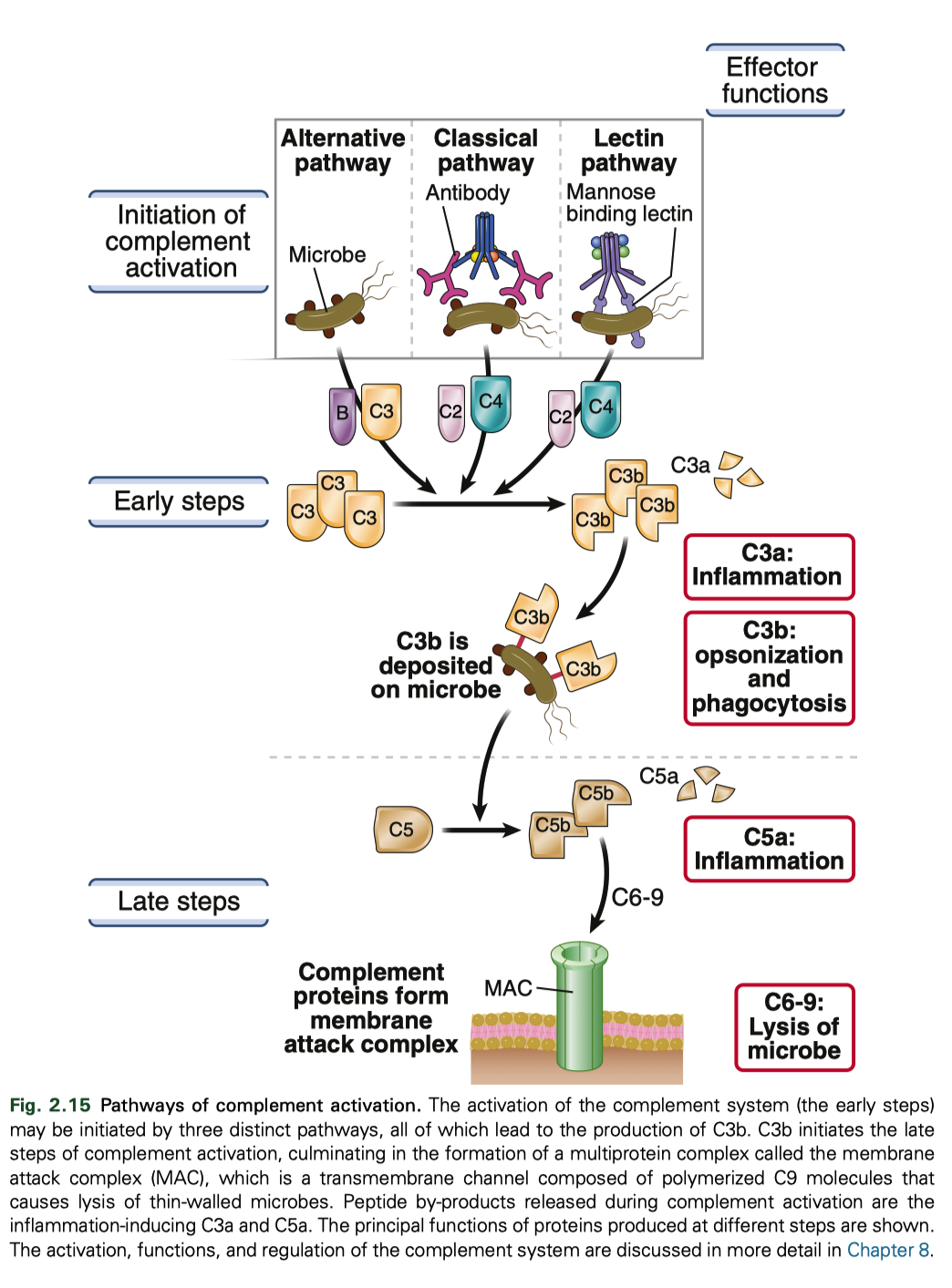
✅ Opsonizes microbes ( C3b ) → Enhances phagocytosis ✅ Forms MAC ( C5b-C9 ) → Directly lyses pathogens ✅ Promotes inflammation ( C3a , C5a ) → Recruits immune cells ✅ Clears immune complexes → Prevents excessive immune responses
Give Examples of Cytokines , their Source , Target , and Role
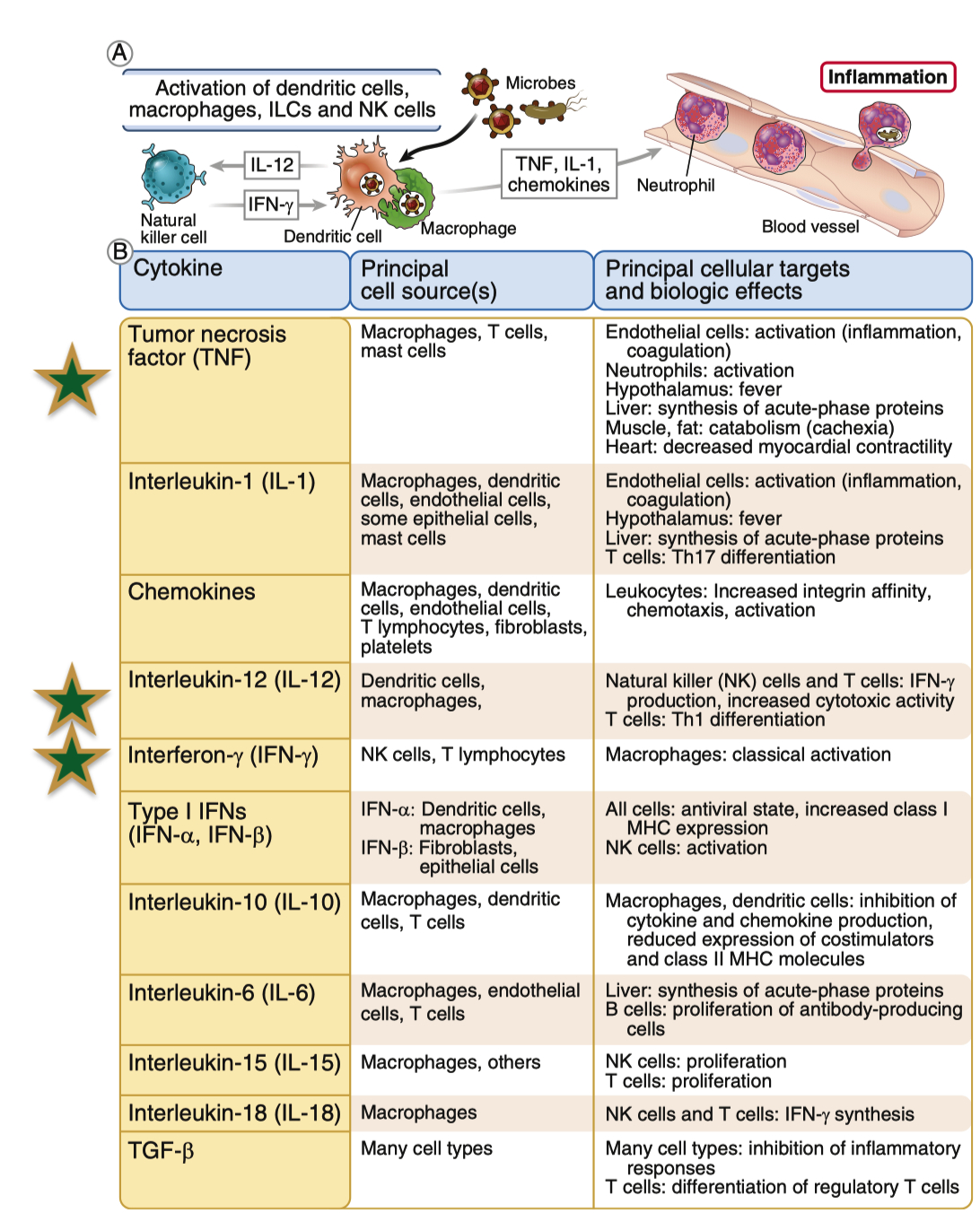
Understand the Tissue of Origin for B and T Cells
B = bone marrow
T = thymus
B Cells :
Develop and mature entirely within the bone marrow. This is where they undergo VDJ recombination to generate a diverse antigen receptor repertoire. Once mature, they migrate to secondary lymphoid organs (e.g., spleen, lymph nodes) where they can be activated by antigens.
T Cells :
Originate from the bone marrow but migrate to the thymus for maturation. In the thymus, they undergo positive and negative selection, ensuring that they recognize self-MHC molecules while eliminating strongly self-reactive clones.
